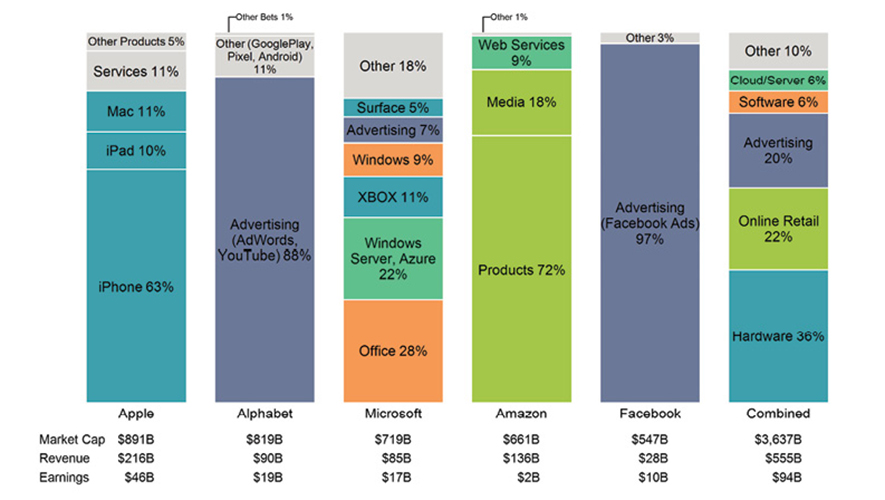The following article is based on Tyler Musson's presentation at the 2018 Dealership Minds Summit. To watch the presentation, click here.
Proving your marketing ROI, why is it important? For me, I think we’re still fighting for relevance in the industry. Budgets are smaller than we’re used to in other industries. The ability to prove your return on investment on what your ownership is giving you to grow the business is key to growing your marketing department, growing relevance in the industry and growing your budget over time.
You have to be able to prove all this. That’s why improving your marketing ROI is important.
The three key topics I will cover are mindset, big data analytics and leverage.
Mindset
When we talk about marketing, we talk about change. We talk about thinking differently. To do either of those things, you have to have a specific mindset. Results from any campaign or idea you embark on take focus. Focus takes concentration and concentration takes discipline. You can achieve exactly none of what I’m going to talk about without the proper mindset and discipline.
Part of mindset is a chain of beliefs; a belief system we all have. “I don’t set aside an adequate budget for marketing, but I know I need to. But the last time I tried something, it didn’t work, so marketing doesn’t work, so I won’t apply the proper resources.” That kind of becomes a feedback loop because you’re not trying different things and you’re not testing things. This negative mindset can creep into the dealership.
To put it simply, you have the flawed mindset vs. the abundance mindset, or Frank vs. Matt (see illustration below)

CAPTION HERE
Frank is an opportunity seeker. He had FOMO, which is a marketing term for fear of missing out. He is focused on quick, easy and cheap shortcuts. He’s into buying the magic bullet or the quick solution; if you had to name it, you’d call it the easy button.
He gets the new product/service/idea and he takes action. He starts to implement. Most people stop here. Some make a little bit of money and they go onto the next shiny object instead of milking these things for all they’re worth. Most people don’t end up making money and they end up in this cycle. They hit a road bump and it puts them right back into the feedback loop again.
And then there’s Matt. Matt has more of an abundance mindset and a more long-term vision. He is focused on delivering real value instead of a quick fix. The focus is on building a real business.
This mindset focuses on one core business model or one core hypothesis. In this feedback loop, we are motivated to drive traffic to continually attract new leads to the business. When we get to here, if we do make money, we have the opportunity now to offer more quality products and services, and this loop feeds itself. When you’re doing it right, you have the opportunity to deepen the relationships. You view problems as being only temporary, that there’s always a way to solve the problem through tweaking, testing, split testing and other testing methodologies.
Big Data Analytics
What’s the big deal with big data analytics? It’s really not about the data, it’s about the analytics. Analytics is just taking a big clump of data and making it meaningful so that we can draw insight from that data and make decisions. Analytics is the true hero of the day and not necessarily data.
“Information is the oil of the 21st century and analytics is the combustion engine,” says Peter Sondergaard, senior vice president at Gartner, a marketing research and consultancy firm.
Gary King of Harvard University says big data isn’t about the data. He’s making the point that while data is plentiful and easy to collect, the real value, the real meaning is the in analytics. Eric Schmidt from Google has said, “There were 5 exabytes of information created between the dawn of civilization through 2003. But that much information is now created every two days.” He said that in 2010. Imagine what it’s like today.
When you think of analytics, you likely think of Google Analytics. Google paved the way to one of the greatest software tools we have at our disposal.
The holding company of Google is Alphabet. The wealthiest companies in the world are dealing with big data analytics. There’s a reason they’re taking over industries and dismantling the retail industry. Amazon, Google, Facebook, Microsoft and Apple all show growth. Meanwhile, IBM and Yahoo are not growing. It’s similar to our industry. These guys are not blasting off with the rest of them because they are not innovative, and they are not doing as much with their data.
Leverage
When you look at the revenue mix of the tech giants, you see that a large percentage of the product mix is advertising. Google is leveraging advertising. They are leveraging Pareto’s Law which states that 80% of “X” is produced by 20% of “Y” or 80% of “X” originates from 20% of “Y.” So, 80% of X is produced by 20% of Y or 80% of X originates from 20% of Y. What I’ve seen is in organizations, 20% of the people are producing 80% of the results, most of the time. Some other examples are 80% of your results are produced by 20% of your employees, 20% of your sales represent 80% of your cashflow, 20% of criminals commit 80% of crimes or 20% of drivers cause 80% of the accidents.
Tech Giant Revenue Mix
Alphabet and Facebook get almost all of their revenue from ads. Apple, Microsoft and Amazon have more diverse sources of revenue.

CAPTION HERE
I use Pareto’s Law in every project I start. I try to look at the data that I have downloaded and I say, “where is the 20% that’s producing 80% of the results?”
With this in mind, Google’s 2017 revenue was $110 billion. Apply Pareto’s Law to the holding company Alphabet. Alphabet’s revenue was $110 billion. Of that, $86 billion came from Google ads. Alphabet owns 200 companies and of those 200 companies, there’s $110 billion dollars, $86 billion of it comes from one product, Google Ads. It’s all driven by structured data analytics, AI and machine learning. It’s also all driven by a process called conversion rate optimization. Conversion rate optimization (CRO) in internet marketing is a system for increasing the percentage of visitors to a website to convert into customers or to, more generally, take any desired action on a webpage.
Small Changes Can Produce Big Results
If you can imagine being out in the middle of the ocean and the water is completely still and one drop of water hits the ocean. That ripple effect could go out for miles. It’s the same idea with conversion rate optimization. You are taking a bunch of small changes and you are slowly tweaking, improving and optimizing everything you are doing.
With CRO there are four steps to improve anything; an investigation phase, a research phase, optimization and evaluation. Ultimately, it is a feedback loop with everything you are working on.
CRO — 4 Steps to Improve Anything

CAPTION HERE
Before starting any optimization in the industry, you need to understand your lead engagement rate. This is the percentage of leads that your salesforce actually engages. I can promise you that, if you have not been paying attention to this and you actually start to look at it, you might be shocked at how low that number may be as far as how many leads are being engaged.
You next need to isolate your lead conversion rate. This is basically what percent of the people that land on your website or your landing page are converting into a request for a quote, a finance application or a click to call. You also need to know the sales conversion rate which is the percent of leads you generate that actually close.
To do any of this, you need traffic, analytics and your website. You also will need everyone who is involved — heads of marketing and sales, certain salespeople and sales managers — to understand the goal.
The goal may be to engage every lead that comes through and measure what happens. An example could be that we need to improve the frequency and time that we engage with our leads.
The first step in working to improve engagement with leads is data collection and investigation. At Washington Tractor, the lead response times were inconsistent when we started. We needed to improve the engagement rate to 75% or more, increase the inventory of the product line we were driving traffic to and increase lead response time to under an hour. In 2016, the response time was 24- 48 hours. Now it has improved to under 5 minutes on average.
After data collection and investigation, a hypothesis and goal need to be set. Ours was, if we double our lead conversion rate and clickthrough rate and improve our engagement rate and times, can we increase our unit sales year-over-year by 50%?
Learn to setup split tests in Google AdWords. We started with AdWords. We made very small differences in the headlines, display URLs and the descriptions. We test headlines, descriptions, destination URLs and calls to action. You can then setup several variations of one ad. I suggest starting out the by setting up two completely different ads targeting the same people. Whichever ad wins out is what becomes your control. You then start tweaking the same ad, making it better and better.
You’ve run your tests and now you’ve got your data. What I do is I look at the goals, the conversion rates and how many actual sales are coming through those leads and how much it is improving. You will want to cross reference your test results to the data and unit sales you are optimizing.
Other ways you can optimize: user testing, surveys, preference tests, click tests, heat mapping, eye tracking, mouse tracking, scroll mapping, personalization and visitor recordings. As you deploy these strategies and these tools, it becomes a continuous optimization process across all different marketing channels.
CRO creates all good problems. If you do this right and you double your leads and double your traffic, you will need more inventory, improved transfer systems, improved sales process, improved customer service, improved reputation management, better inventory analysis and control, better preseason planning and insights, and more space.
Conclusion: You can lead a horse to water.
You guys can hear about the things you can do to scale, grow and double your business. But it only matters if you implement and take action. All this stuff, it’s a lot of hard work. It takes a lot of persistence and patience but it’s totally worth it. I can’t force you to drink, but there’s tons of resources out there and tons of ways to grow your business.
Be Matt, don’t be Frank.
Learn More
-
How Dealers Can Use ROI to Sell More than Farm Equipment
To successfully sell customers on ROI, determine the numbers that are important to them — hours saved, fuel savings, yield increases — and go from there.
Related Content
Titan Machinery’s Jeff Bowman: 7 Key Changes to Transform Dealership Marketing
The Importance of Improving Your Marketing ROI & How to Do It
Target Customer Interactions Using Content Marketing
How YouTube Fits in the Marketing Mix & Making It More Effective
Getting Results with Do-It-Yourself Marketing
Leveraging CRM for Farm Equipment Leads and Sales
How to effectively use digital marketing for ag equipment dealers
Good Data Takes Digital Marketing Further for Farm Equipment Dealerships






